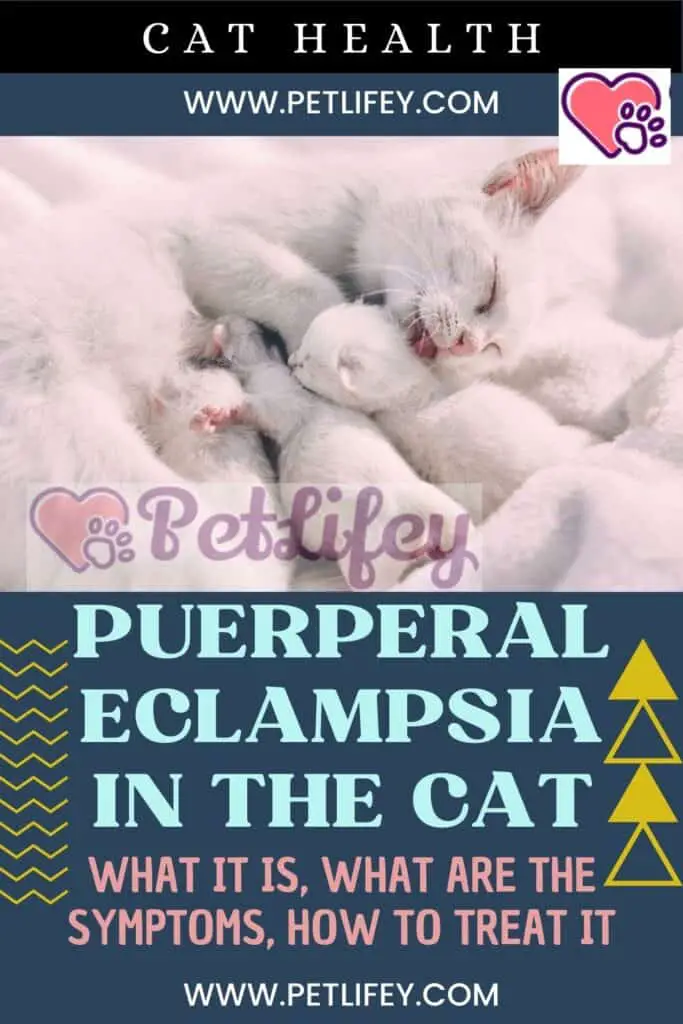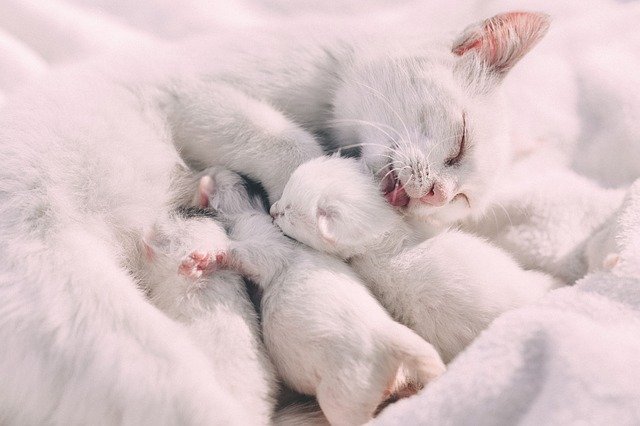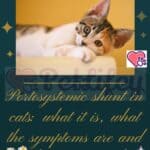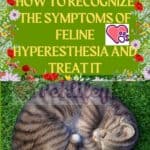
After giving birth, the cat may develop a condition known as puerperal eclampsia. Let’s see what it is and how to recognize it.
Puerperal eclampsia in the cat is a disease that arises in the final period of pregnancy or after childbirth. If your cat is pregnant, pay attention to the manifestation of this disorder of an eating nature, so as to recognize it in a timely manner. Eclampsia, in fact, can be lethal. For this reason, in case of suspicion, it is necessary to promptly contact the veterinarian for the appropriate treatment.
What is puerperal eclampsia in the cat
This pathology is also known as “milk fever”, “hypocalcemia” and “puerperal tetany”. Affected animals have a reduction in the amount of calcium, caused by breastfeeding the cat.
Puerperal eclampsia in the cat is more likely to occur following the first calving, as well as in cases of very numerous litters. In fact, it has been observed that animals aged between 14 months and 5 years develop this disease more frequently, where the number of newborns is greater than 7.
How to recognize it: the symptoms
Generally, the symptoms of this pathology arise 2-4 weeks after delivery. In fact, this is the period in which puppies need the maximum amount of milk for their growth. How does puerperal eclampsia manifest itself in the cat?
The animal appears weak and restless, has an uncertain gait and may show disinterest in its young. Among the most obvious symptoms, there is a noticeable weight loss in the cat, accompanied by an increase in thirst and diuresis.
Additional manifestations of the disease are dilated pupils, stiffness of the body and spasms. In severe cases, vomiting, difficulty breathing, fever and seizures, collapse and death may occur.
Diagnosis and treatment
Given the considerable risks to the health of the animal, at the first suspicion of puerperal eclampsia in the cat it is advisable to go to the veterinarian for a thorough examination. The consequences of hypocalcemia, in fact, can be fatal.
Recognizing and promptly treating the pathology, on the other hand, there is a good chance of a favorable prognosis. How is puerperal eclampsia diagnosed? Clinical examination and evaluation of calcemia is carried out.
Treatment of the disease involves the administration of calcium, either by intravenous infusion to the cat orally. In addition, you can resort to drugs such as muscle relaxants and anticonvulsants, for the treatment of symptoms. It is also important to provide adequate hydration to the cat.
Of course, during this period, the animal will not be able to breastfeed its litter. For this, it will be appropriate to take care of it, feeding the puppies with artificial milk.
How to prevent puerperal eclampsia in the cat

Can the onset of this disease be prevented? The answer is yes. First, it is essential to assist the animal during the postpartum phase, to identify risks to the health of the mother and kittens.
During lactation it is important to provide the kitty with a balanced diet, with doses that meet the nutritional needs of the animal, paying particular attention to the ratio of phosphorus and calcium.
At the end of the cat’s pregnancy, the animal’s nutritional needs are increased. For this, it is necessary to provide the mother with a double or triple food ration than usual. In addition, the kitty also needs an increased amount of water, which contributes to milk production.






